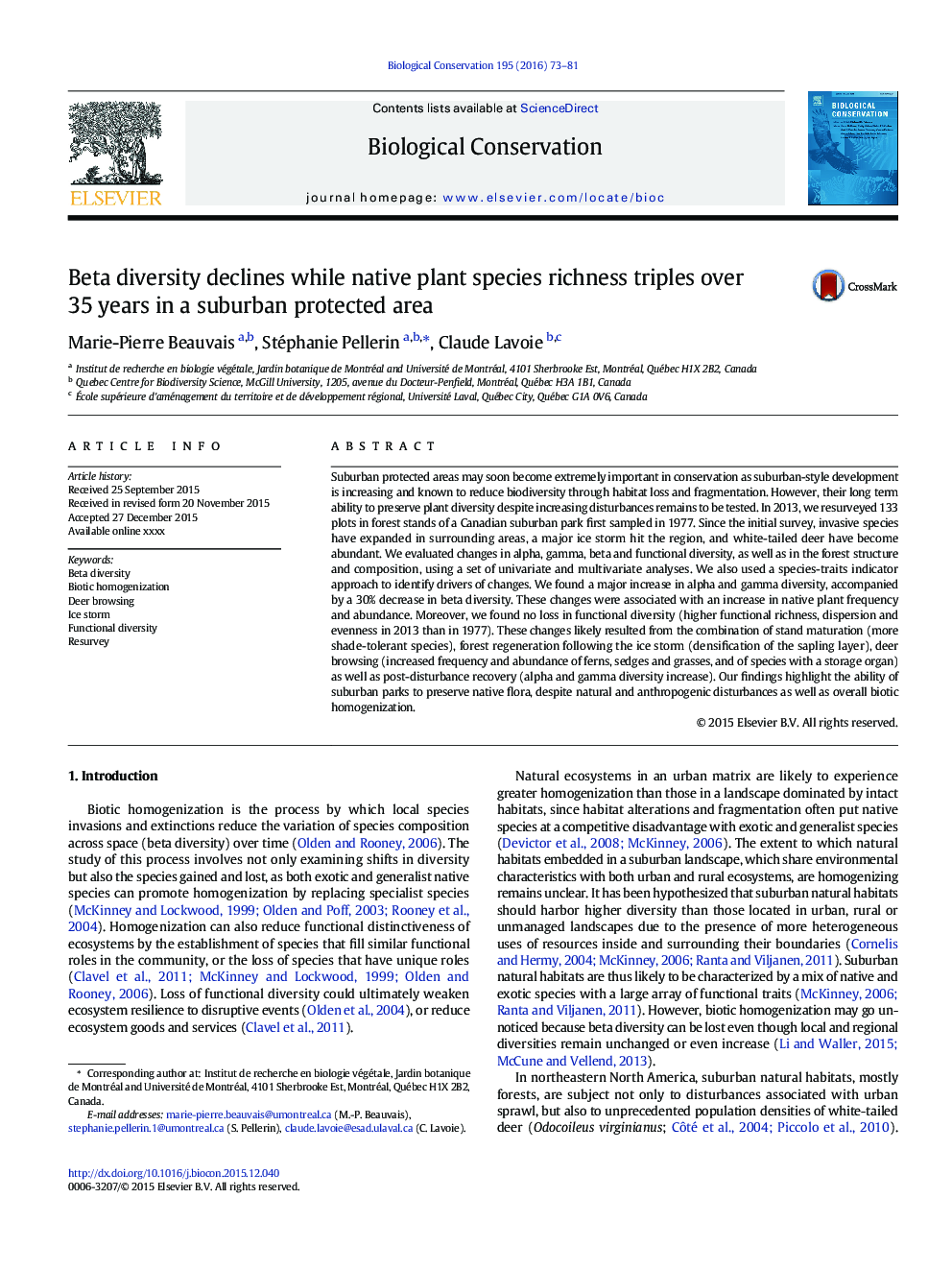| Article ID | Journal | Published Year | Pages | File Type |
|---|---|---|---|---|
| 6298689 | Biological Conservation | 2016 | 9 Pages |
Abstract
Suburban protected areas may soon become extremely important in conservation as suburban-style development is increasing and known to reduce biodiversity through habitat loss and fragmentation. However, their long term ability to preserve plant diversity despite increasing disturbances remains to be tested. In 2013, we resurveyed 133 plots in forest stands of a Canadian suburban park first sampled in 1977. Since the initial survey, invasive species have expanded in surrounding areas, a major ice storm hit the region, and white-tailed deer have become abundant. We evaluated changes in alpha, gamma, beta and functional diversity, as well as in the forest structure and composition, using a set of univariate and multivariate analyses. We also used a species-traits indicator approach to identify drivers of changes. We found a major increase in alpha and gamma diversity, accompanied by a 30% decrease in beta diversity. These changes were associated with an increase in native plant frequency and abundance. Moreover, we found no loss in functional diversity (higher functional richness, dispersion and evenness in 2013 than in 1977). These changes likely resulted from the combination of stand maturation (more shade-tolerant species), forest regeneration following the ice storm (densification of the sapling layer), deer browsing (increased frequency and abundance of ferns, sedges and grasses, and of species with a storage organ) as well as post-disturbance recovery (alpha and gamma diversity increase). Our findings highlight the ability of suburban parks to preserve native flora, despite natural and anthropogenic disturbances as well as overall biotic homogenization.
Related Topics
Life Sciences
Agricultural and Biological Sciences
Ecology, Evolution, Behavior and Systematics
Authors
Marie-Pierre Beauvais, Stéphanie Pellerin, Claude Lavoie,
